THE MISSING LINK OF SUSTAINABILITY: TRANSPARENT REPORTING AND MARKETPLACES
ECO-LOCALS.COM
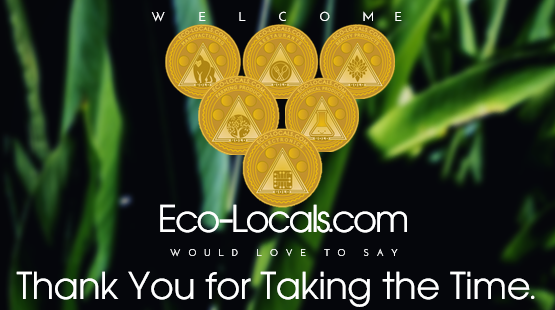
How do you compare commercial products based on their sustainability claims? We have developed free and easy to use sustainability labels to help consumers make sustainable purchasing decisions. These go beyond "green-washing" and actually help manufacturers make clear commitments to show they are holistically providing proper stewardship for their respective ecosystems.
Environmental Product Declarations

These “EPD Labels” tell us how far stuff traveled, the total recycled content, and energy/water used from cradle to cradle. They can also provide secondary information about products such as "percentage or renewable energy", "post-consumer or pre-consumer recycled content" or "blue water vs green water use".
This data typically comes from Environmental Product Declarations provided by Enviro-Dec. Check them out here. Note that we are not connected to the Enviro-Dec team in any way. We are a very small team ran mostly by one person who has identified a gap in the market and took the initiative to develop this service based on their experience with rating systems for Green Buildings.
Enviro-Dec doesn’t have a shopping network for products that they certify. It can also be expensive and must be third party certified which could lead to conflicts-of-interest over time. We’re trying to bridge that gap by providing a community-driven and free-to-use system.
Products earn Eco-Locals EPD Labels by providing the following information verified by an EPD registered with Enviro-Dec or a self-reported equivalent.
-Energy use (in kwh) per unit or kg – exempt if 100% rain and sunshine grown
-Blue, grey and black water use per unit or kg – exempt if 100% rain and sunshine grown
-Recycled content percentage per unit or kg
-Renewable energy percentage per unit or kg
-Regional content percentage per unit or kg
-CO2 equivalent per unit or kg
-Company diversion rate
Eco-Locals.com Green Commitments
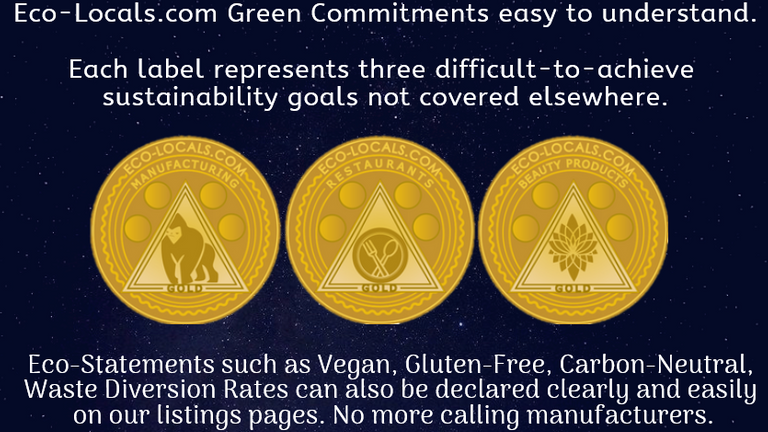
Adherence to the additional commitments below is not explicitly required. These Green Commitments were developed by the Eco-Locals.com team and are intended to be adaptive and responsive to comments and needs from the community.
If a manufacturer commits to a Green Commitment they are legally required to clarify how they meet that requirement. This legal requirement falls under false advertising law. We hope the community and manufacturers will be reasonable, ask questions and provide transparent data and/or third party quality assurance when and if required.
We implore the community to use Eco-Locals.com as a tool to work together and not to litigate for false advertising. We are constantly working for free to help businesses document their products clearly and properly.
Any product with an EPD Label is backed-up by the ISO environmental product declaration standards (or equivalent) and are usually developed alongside a third party sustainability consultant. You can find a consultant recommended by Enviro-Dec here. We do not and can not assume any responsibility for the accuracy of claims made by manufacturers though we do moderate comments, responses and listings at a high-level to enforce our terms of use.
These Green Commitment Badges will automatically show up listing pages based on the manufacturer's applicable commitments. These will always be located at the top of the page alongside other features such as being: Carbon Neutral, Delivery Available, GMO-Free, Gluten Free, Vegan, 100% Local, etc.
Meeting any single commitment will default in a grey label.
Meeting any two requirements results in a silver label.
Meeting all requirements results in a gold label.
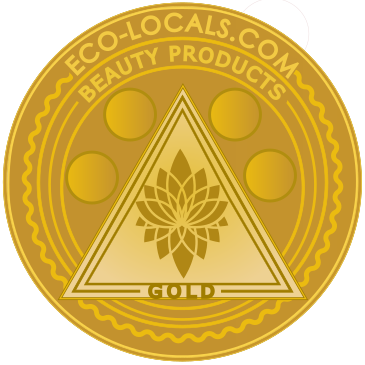
Green Commitment #1: Implement packaging re-use programs and collect or re-fill used containers from consumers in-store.
Green Commitment #2: Do not test any products on animals.
Green Commitment #3: All ingredients are certified as safe for intended uses by the Food and Drug Administration or Health Canada. Provide a Health Product Declaration for the product.
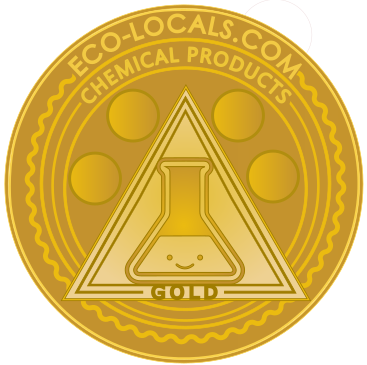
Green Commitment #1: Re-use or recycle 100% of all by-products of manufacturing. Allow no chemicals to enter environmental air or water networks.
Green Commitment #2: Implement packaging re-use programs and collect or re-fill used containers from consumers in-store.
Green Commitment #3: Purchase certified carbon off-sets for 100% of the embodied energy of the product.
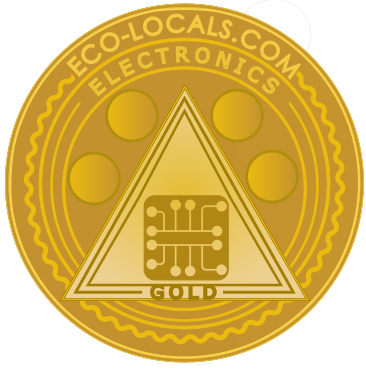
Green Commitment #1: Collect e-waste from consumers and ensure 100% of materials are recycled or reused within 5,000 km of the collection location.
Green Commitment #2: New products are designed to be upgraded instead of replaced by future technology. Obsolete parts must be collected or repurchased from consumers and 100% of materials must be recycled or reused within 5,000 km of the collection location.
Green Commitment #3: Purchase certified carbon off-sets for 100% of the embodied energy of the product.
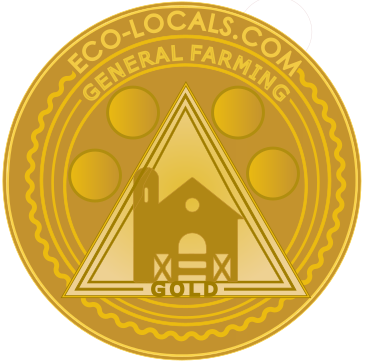
Green Commitment #1: Participate in a Stewardship Index Program to track Habitat/Bio-diversity as well as Energy, Water, Nitrogen, Soil Organic Matter and Phosphorous use.
Green Commitment #2: Provide content which addresses your approach to the intent and practices of the Land Stewardship Center (resources are available by topic):
Caring for the system as a whole – …building up biological fertility in the soil, incorporating an understanding of the ecological cycles on the landscape (water, energy, nutrients) and how land-use practices can either benefit, be in harmony or negatively impact these cycles and other land-users, flora and fauna.
Conserving resources – Maximizing efficiency and striving to reduce the consumption of renewable and non-renewable resources; long-term optimization versus short-term maximization of production.
Maintaining and enhancing stability in nature – Sustaining and encouraging natural biological diversity and complexity; maintaining natural areas and functions on the land (i.e. wildlife habitat conservation).
Applying cultural values – Caring for the health of the land for future generations and long-term economic stability; the link between civilization (urbanization) and the land-base and ecosystems that are vital to survival; the intrinsic value and right to exist of all life on Earth.
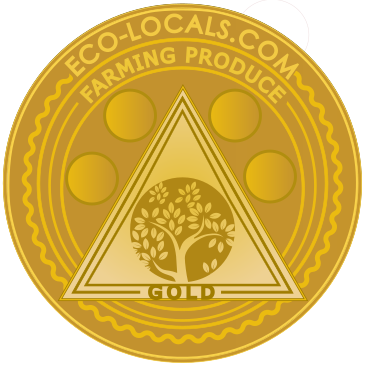
Green Commitment #1: Use 100% organic and low energy density fertilizers (e.g. worm castings, local compost, manures). Document connections with programs who collect compost from local super markets and restaurants.
Green Commitment #2: Provide publicly available soil management reports and maintain soil quality through crop rotations, poly-culture, local compost or other low-impact restorative techniques. Apply sustainable farming techniques such as cover crops, high tunnels and other season extension techniques, small ruminants and pastured poultry to increase productivity of land. (Sustainable Agriculture Research and Education Resources)
Green Commitment #3: Use electronically powered equipment in lieu of combustion where possible. Track equipment run-time hours and replace combustion powered equipment with electric or manual equipment by 5% per year until a net reduction of 50% is achieved.
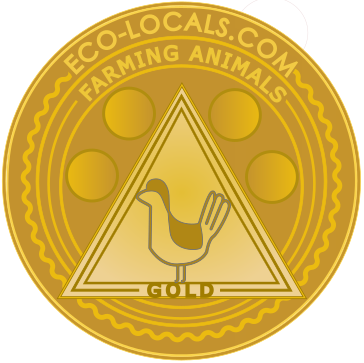
Green Commitment #1: Do not raise livestock on land which contributes to deforestation or has been deforested in the last 20 years.
Green Commitment #2: Have programs in place to divert all animal waste produced from local water systems, harvesting as much manure/waste for resale or reuse as is feasibly possible.
Green Commitment #3: Specify low impact and embodied energy animal feeds, track feed-conversion-ratio and apply strategies to optimize efficiencies
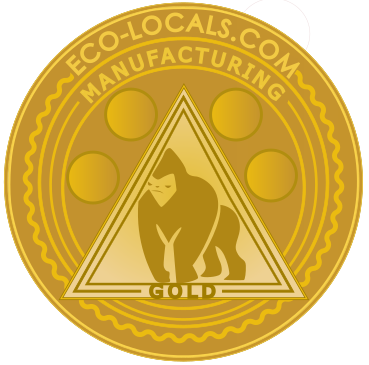
Green Commitment #1: Divert 100% of manufacturing waste from landfill. Re-use a minimum of 50% of all waste generated.
Green Commitment #2: Product is 100% comprised of materials which can be harvested in 5 years or less and are 100% extracted and manufactured within 1,000 km.
Green Commitment #3: Product materials have a net-negative carbon footprint from cradle to gate without the use of renewable energy credits.
*Disclaimer: All data must be based on Environmental Product Declarations, Health Product Declarations, or self-declared based on accurate and publicly available information. Email us for more info @ admin@eco-locals.com
Lean about Environmental Product Declarations (Fees)
Learn about Health Product Declarations (Fees)*
ISO 14024:2018 - Environmental labels and declarations -- Type I environmental labeling -- Principles and procedures
ISO 14021:2016 - Environmental labels and declarations -- Type II Self-declared environmental claims
ISO 14025:2006 - Environmental labels and declarations -- Type III environmental declarations -- Principles and procedures
Congratulations, your post has been selected to be included in my weekly Sustainability Curation Digest for the Minnow Support Project.
Editor of the The State of Steem SoS Daily News.
Promoter of The State of Steem SoS Weekly Forums.
Editor of the weekly listing of steem radio shows, podcasts & social broadcasts.
Founder of the A Dollar A Day charitable giving project.
WOW! Thank you @pennsif :) We can't wait to share some more great articles and insights with you and your team :)
I look forward to reading more.
This is Really Important Work that you guys are Doing - Know That! Awesomeness - Keep it Up. There can never bee too much Accountability for the quality of our goods and services - it's a sort of gauntlet out of the old world of the 'low baller effect of cutting corners in the square factory..'
This is a very great project you are undertaking. It is also ambitious and so I applaud your effort to help to inspire accountability and a better world. Great work so far!
I do have advice as a designer... I hope that you find this constructive but I think there is a lot to take in and if you can distill your message into smaller, easier to read bite sized chunks, it would be easier to digest- at least your initial messages. I would also recommend making your website background white with black text. It would be much easier to read and more inviting.
Thank you again!
Alas, our team has no dedicated designer so much of this fell on me :P I wanted a forced night mode for the energy savings on monitors. It's hard to digest these complex issues but you seem good at it! I'll do another sweep though because things can always be pared down more.
I'll get a day mode working one day and that way people can choose :D
Constructive feedback is great - always improving, always all ears.
Night mode for energy saving is brilliant. I hadn't thought of that and it is so conscious... but from a usability perspective it is harder to read, especially for older people, and from design perspective it feels heavier. It is a tradeoff!